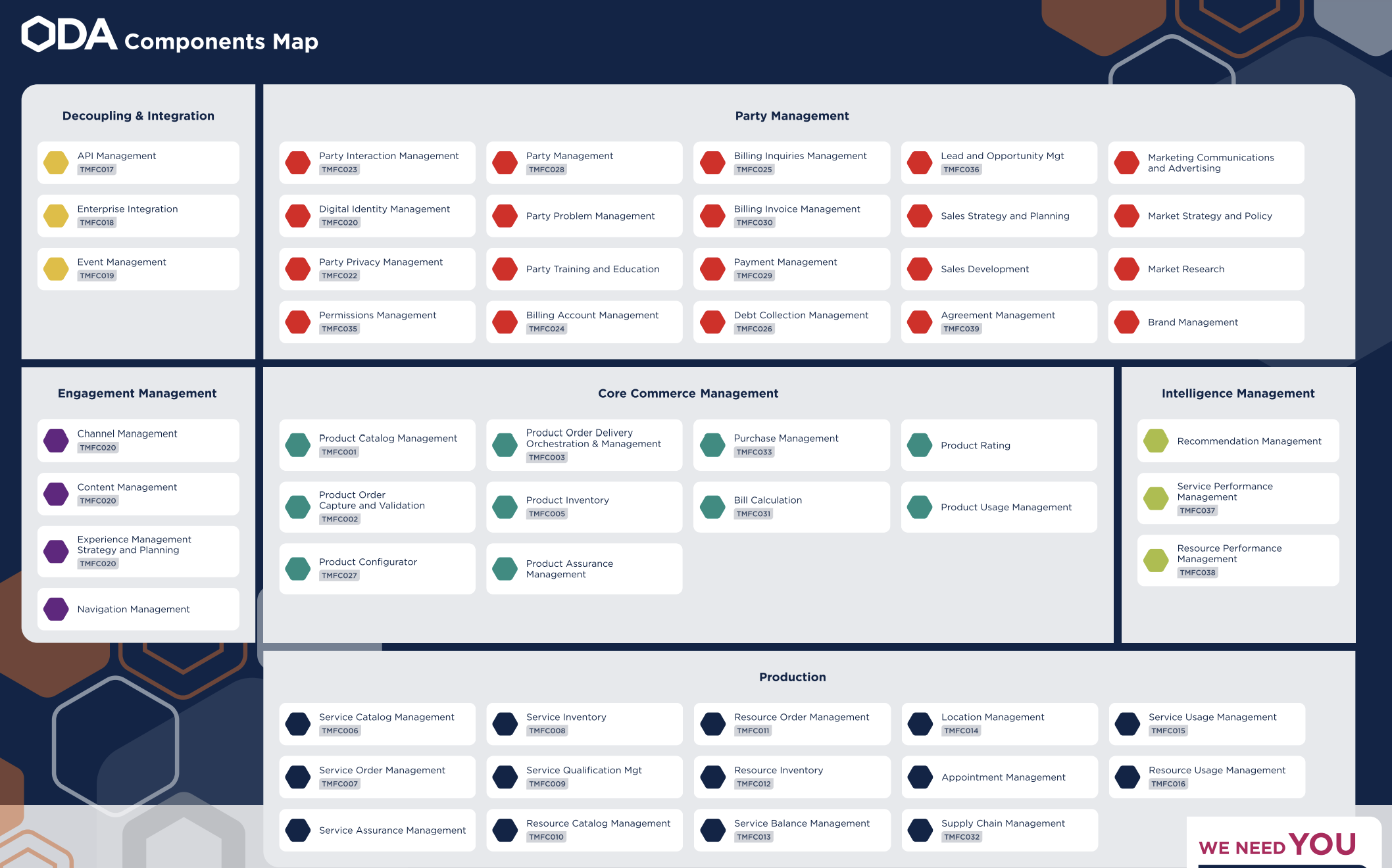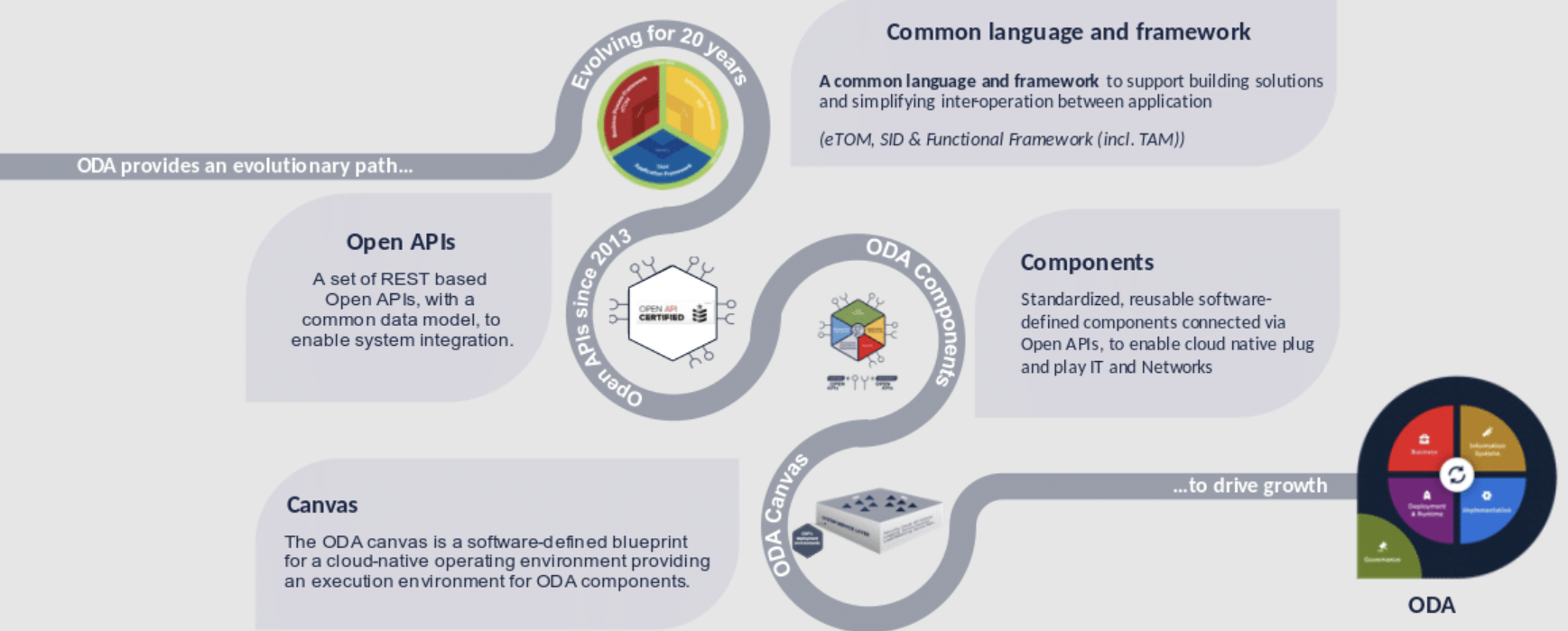
Cross-posted from the wasmCloud blog.
Earlier this year we shared how a group of international CSPs (communication service providers) and their partners brought Wasm to telecoms. WebAssembly Canvas Phase I a TM Forum Catalyst Project, was an early PoC that evaluated whether wasmCloud, a CNCF sandbox project, could be a credible alternative to Kubernetes in managing TM Forum's estate of open APIs. Referred to as Open Digital Architecture (ODA) components, these open APIs are currently managed and maintained in ODA Canvas, an ODA repository built on Kubernetes.

Source: TM Forum ODA Evolution
The TM Forum originally assumed Kubernetes would be the default deployment platform for the ODA Canvas. Kubernetes has its limitations, though, particularly when it comes to resource efficiency and running edge workloads. It's also not totally vendor-neutral. Underlying Kubernetes code might be the same regardless of which cloud hosts it, but the host environment always requires the use of vendor-specific tooling. For instance, AKS requires us to use Azure Active Directory and Google Kubernetes Engine wants us to use gke-deploy instead of kubectl. Becoming more open to drive greater interoperability is a huge focus in telecoms.
Having seen progress hastening in the development of the WebAssembly Component Model and WASI .2, the Project CSPs suspected Wasm could bring an accelerated, more efficient and solution-agnostic approach to hosting and managing ODA Components in Canvas.
They were right. The successful WebAssembly Canvas PoC demonstrated that wasmCloud could significantly quicken the journey towards a more interoperable, componentized architecture, and revealed its promise to create serious operational and financial efficiencies for the telecommunications industry. Read the details in full on the CNCF blog.
Phase II: Adoption and Interoperability
In just a few short months, the WebAssembly Canvas project has progressed to the next stage in its evolution. South African CSP MTN.za joins e& (Etisalat), nbnCo, Vodafone, Orange, and systems integrators Wavenet, SigScale and Comviva, as the project's focus shifts to more seriously examine how WebAssembly Canvas might work in practice.
WebAssembly Canvas Phase II has two main goals. Firstly, it will explore how to adopt new technologies, like Wasm, into the ODA without unnecessarily disrupting the approach being taken by product vendors or slowing down adoption of the ODA in CSPs. Secondly, it will show examples of how the Wasm implementation of ODA Canvas could work for real. It will analyze what's different about this way of creating components and explore how compliant Wasm-based components can be deployed successfully alongside the existing Kubernetes-based Canvas.
In practical terms, Phase II will begin to build the equivalent platform to the ODA Canvas Reference Implementation, written using wasmCloud providers to perform functions of the equivalent software in the Kubernetes-based original. The project team will also demonstrate how components are deployed and how they can be used in conjunction with the current ODA Canvas Reference Implementation.
If you're keen to learn more, take a look at this more detailed post on the TM Forum blog. Brian Burton, Principal Architect at Vodafone, has also put together a short video setting out three distinct use cases being explored within Phase II…take a look! You can also visit the WebAssembly Canvas Phase II page on the TM Forum site. We'll keep you abreast of progress in this exciting project as new details emerge.
To hear more about what's happening with wasmCloud, join our weekly community meeting every Wednesday at 1 PM ET on YouTube. Find agendas, recordings and meeting notes here. And don't forget to join us on Slack!
